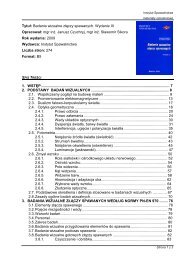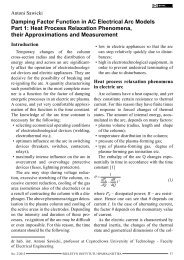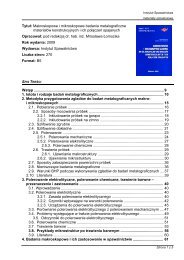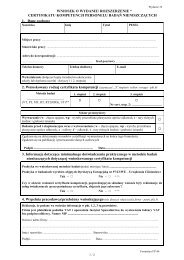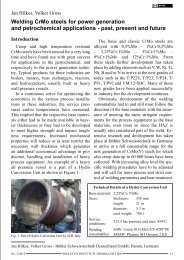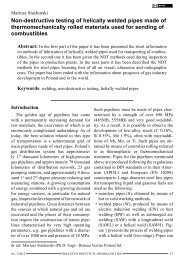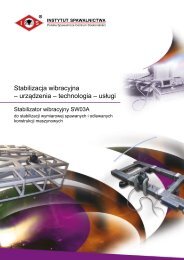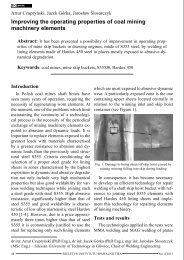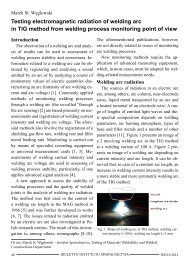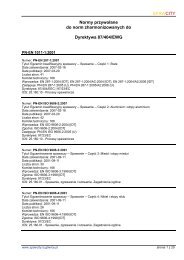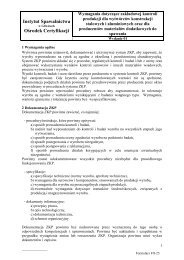Biuletyn Instytutu Spawalnictwa No. 01/2012
Biuletyn Instytutu Spawalnictwa No. 01/2012
Biuletyn Instytutu Spawalnictwa No. 01/2012
Create successful ePaper yourself
Turn your PDF publications into a flip-book with our unique Google optimized e-Paper software.
Fig. 19. Assembly table with fixed sign<br />
wire feeder. The device is equipped with a<br />
pulsed laser Nd:YAG (wavelength: 1064 nm,<br />
average power 200 W, pulse energy 90 J).<br />
The device is mobile (1400x730x1505 mm,<br />
weight 345 kg), enabling welding in various<br />
places, often difficult to access. The movements<br />
of the arm with a turn-and-tiltable laser<br />
head are controlled by an operator with a<br />
joystick. Limitations are similar to<br />
those experienced while working<br />
with a TIG welding torch.<br />
The welding station was also<br />
equipped with an assembly table<br />
provided by the Museum Preservation<br />
Department (Fig. 19).<br />
The table was used to fix and position<br />
the sign while welding so<br />
that a joint to be made was in PA<br />
position or a position close to PA<br />
(Fig. 21).<br />
Summary<br />
On the basis of the visual inspection of the<br />
damaged sign from the main gate to the former<br />
German Nazi concentration and extermination<br />
camp Auschwitz I, after its straightening and<br />
sand-blast cleaning, welding tests, examination<br />
of model joints and technological supervision<br />
over repair welding, it was possible<br />
to formulate the following conclusions:<br />
Fig. 20. Mobile laser welding machine ALM 200<br />
Fig. 21. ALM 200 laser welding of sign fixed on assembly<br />
table<br />
NR <strong>01</strong>/2<strong>01</strong>2<br />
BIULETYN INSTYTUTU SPAWALNICTWA<br />
31






